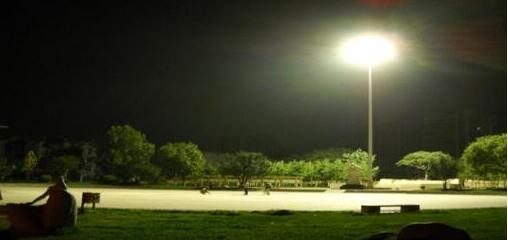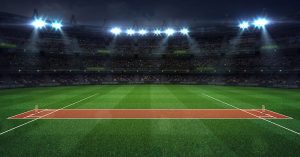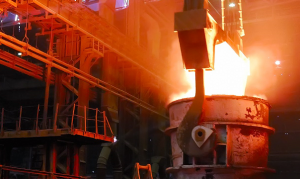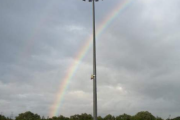What Are Flood Lights?
LED flood light is a wide-beamed, high intensity lamp designed to cover large outdoor fields or to “submerge” the area with outdoor light in low-light conditions. Now, these lights are powered by efficient LED technology and come in a variety of shapes and uses. From recessed PAR-style LED bulbs, to wall-mounted lighting, to parking lot flood lights, to high-mast flood light, and so on.
 Four advantages of LED floodlights
Four advantages of LED floodlights
Advantage 1: Irradiation Angle Adjustment
LED floodlight is actually a kind of spotlight, its illumination angle can be adjusted, so its use is more flexible. Moreover, general floodlights will have an angle adjustment scale plate, and adjustment according to the indication of the scale plate which makes the installation more accurate.
Advantage 2: Wide Rrange of Applications
Compared with other lighting fixtures, LED floodlights are very compact, so they can meet the needs of a wider installation site. The lamp is not prone to damage during use, nor will it heat up due to the long use time, so its lifespan is also relatively long.
Advantage 3: Good Lighting Effect
Since the floodlight is actually a kind of spotlight, it has the function of spotlighting, so the light effect is very good. The color of the light is bright, and the color purity is high, not dazzling, and the light is soft. In addition, because of the high light efficiency and low power consumption of the LED floodlight, it is quite energy-saving during use.
Advantage 4: Stable Performance and Long Service Life
Compared with traditional fluorescent lamps or high-pressure sodium lamps, LED floodlights can reach 50,000 to 80,000 hours lifespan, and have a small light decay. After 5 years of using, their luminous flux can still be maintained at about 80%, which a common CFL or HPS floodlight can not reach.
LED Flood Light for Factory Workshop
Appropriate lighting can not only increase workers’ comfort and safety, but also help stimulate employees’ work enthusiasm, improve work efficiency and productivity, and also effectively prevent employee fatigue and reduce errors and accidents. High-quality factory lighting fixtures and design solutions can effectively save energy, reduce production costs, and create an efficient, energy-saving, green, environmentally friendly, safe and reliable light environment for customers, which has become an invisible driving force for enterprise production.
-
Reasonable Lighting Method
Lighting methods can be divided into: general lighting, local lighting, mixed lighting and accent lighting.
1). For the workshops with high requirements on illuminance and low working position density, mixed lighting can be used for places that are not suitable for general lighting.
2). The requirements for working illuminance are not high, or are restricted by production technical conditions, and are not suitable for places with local lighting design, or places with unreasonable mixed lighting, general lighting design can be used alone.
3). When the illumination of a work area needs to be higher than the general illumination illuminance, the general illumination of the area can be adopted.
4). When the general lighting in the district cannot meet the illuminance requirements, local lighting design can be added. However, only partial lighting should not be installed in the working area of the plant.
5). When it is necessary to increase the illuminance of a specific area or target, the Accent lighting should be adopted.
Due to different production environments, the illuminance standards of the plant are not the same, so according to the classification, the illuminance standards of the plant include the following grades: 0.5, 1, 2, 3, 5, 10, 15, 20, 30, 50, 75 , 100, 150, 200, 300, 500, 750, 1000, 1500, 2000, 3000, 5000Lx.
(1) In a plant environment that meets one or more of the following conditions, the standard value of illuminance for plant lighting should be increased by one level by illuminance classification:
a. For fine work places with high visual requirements, the distance between the eyes and the recognized object is greater than 500mm,
b. Continuous and long-term intense visual work has adverse effects on visual organs,
c. Recognizing moving objects requires short recognition time and difficult recognition,
d. The visual operation has an important influence on the operation safety,
e. Difficulty in identifying objects and background,
f. High operational accuracy requirements, and errors will cause great losses,
g. Visual ability is significantly lower than normal ability,
h. High architectural grade and functional requirements.
(2) When one or more of the following conditions are met, the standard value of the illuminance on the working surface or reference plane may be reduced by one level of illuminance classification:
a. Perform homework for a short time,
b. The accuracy or speed of the action does not matter,
c. The building grade and function requirements are low.
3. Excellent lighting quality
Lighting quality is a sign of the quality of factory lighting design. It mainly includes the following:
1) Choose lamps with high efficiency and suitable light distribution curve. According to the hanging height of the lamp on the factory building frame, according to the value of the room shape index, choose lamps with different light distribution.
When RI=0.5~0.8, narrow light distribution lamps should be used;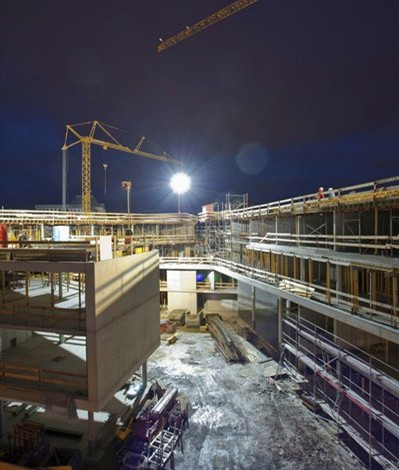
When RI=0.8~1.65, light distribution lamps should be used;
When RI=1.65~5, wide light distribution lamps should be used.
2) Use lighting sources with appropriate color temperature and color rendering index that meets production requirements.
3) To achieve the specified uniformity of illuminance: the uniformity of general illumination illuminance in the work area should not be less than 0.7, and the uniformity of illuminance in the vicinity of the work area should not be less than 0.5.
4) Meet the quality requirements of the direct glare limitation of lighting: the unified glare value (UGR) is in accordance with the provisions of GB 50034-2004. That is, the general allowable value is 22, and the fine processing value is 19.
5) Take measures to reduce the impact of voltage fluctuations and voltage flicker on lighting and prevent stroboscopic effects.
6) The lighting device should work under the allowable working voltage. Compensation capacitors should be used in the places where metal halide lamps and high-pressure sodium lamps are used to improve their power factor.

